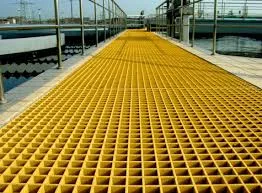
-
 Afrikaans
Afrikaans -
 Albanian
Albanian -
 Amharic
Amharic -
 Arabic
Arabic -
 Armenian
Armenian -
 Azerbaijani
Azerbaijani -
 Basque
Basque -
 Belarusian
Belarusian -
 Bengali
Bengali -
 Bosnian
Bosnian -
 Bulgarian
Bulgarian -
 Catalan
Catalan -
 Cebuano
Cebuano -
 China
China -
 China (Taiwan)
China (Taiwan) -
 Corsican
Corsican -
 Croatian
Croatian -
 Czech
Czech -
 Danish
Danish -
 Dutch
Dutch -
 English
English -
 Esperanto
Esperanto -
 Estonian
Estonian -
 Finnish
Finnish -
 French
French -
 Frisian
Frisian -
 Galician
Galician -
 Georgian
Georgian -
 German
German -
 Greek
Greek -
 Gujarati
Gujarati -
 Haitian Creole
Haitian Creole -
 hausa
hausa -
 hawaiian
hawaiian -
 Hebrew
Hebrew -
 Hindi
Hindi -
 Miao
Miao -
 Hungarian
Hungarian -
 Icelandic
Icelandic -
 igbo
igbo -
 Indonesian
Indonesian -
 irish
irish -
 Italian
Italian -
 Japanese
Japanese -
 Javanese
Javanese -
 Kannada
Kannada -
 kazakh
kazakh -
 Khmer
Khmer -
 Rwandese
Rwandese -
 Korean
Korean -
 Kurdish
Kurdish -
 Kyrgyz
Kyrgyz -
 Lao
Lao -
 Latin
Latin -
 Latvian
Latvian -
 Lithuanian
Lithuanian -
 Luxembourgish
Luxembourgish -
 Macedonian
Macedonian -
 Malgashi
Malgashi -
 Malay
Malay -
 Malayalam
Malayalam -
 Maltese
Maltese -
 Maori
Maori -
 Marathi
Marathi -
 Mongolian
Mongolian -
 Myanmar
Myanmar -
 Nepali
Nepali -
 Norwegian
Norwegian -
 Norwegian
Norwegian -
 Occitan
Occitan -
 Pashto
Pashto -
 Persian
Persian -
 Polish
Polish -
 Portuguese
Portuguese -
 Punjabi
Punjabi -
 Romanian
Romanian -
 Russian
Russian -
 Samoan
Samoan -
 Scottish Gaelic
Scottish Gaelic -
 Serbian
Serbian -
 Sesotho
Sesotho -
 Shona
Shona -
 Sindhi
Sindhi -
 Sinhala
Sinhala -
 Slovak
Slovak -
 Slovenian
Slovenian -
 Somali
Somali -
 Spanish
Spanish -
 Sundanese
Sundanese -
 Swahili
Swahili -
 Swedish
Swedish -
 Tagalog
Tagalog -
 Tajik
Tajik -
 Tamil
Tamil -
 Tatar
Tatar -
 Telugu
Telugu -
 Thai
Thai -
 Turkish
Turkish -
 Turkmen
Turkmen -
 Ukrainian
Ukrainian -
 Urdu
Urdu -
 Uighur
Uighur -
 Uzbek
Uzbek -
 Vietnamese
Vietnamese -
 Welsh
Welsh -
 Bantu
Bantu -
 Yiddish
Yiddish -
 Yoruba
Yoruba -
 Zulu
Zulu
FRP Stub Flange Applications and Benefits in Industrial Systems
Understanding FRP Stub Flanges An Essential Component in Modern Engineering
Fiberglass Reinforced Plastic (FRP) is a versatile material widely used in various industries due to its excellent mechanical properties, corrosion resistance, and lightweight nature. Among the many components fabricated from FRP, stub flanges play a crucial role in connecting pipes, valves, and other equipment in piping systems. This article delves into the significance, design, manufacturing process, and applications of FRP stub flanges.
What are FRP Stub Flanges?
A stub flange is a short piece of pipe or tubing that has a flange at one end. In contrast to standard flanges that are typically thicker and rigid, stub flanges made from FRP provide a lightweight yet strong option for joining components in fluid systems. The use of FRP in manufacturing these flanges provides advantages such as superior resistance to chemicals, moisture, and UV degradation, making them suitable for various environments.
Design Considerations for FRP Stub Flanges
When designing FRP stub flanges, engineers must consider several factors to ensure they meet industry standards and project requirements. One primary consideration is the internal and external pressure that the flange will encounter. Engineers must also consider the temperature fluctuations, as FRP materials have different thermal expansion rates compared to metals.
The design must also accommodate different sizes and pressure ratings. Standardized specifications such as ANSI/ASME B16.5 must be adhered to, ensuring that the flanges can be used interchangeably with those made of other materials.
Manufacturing Process
The manufacturing of FRP stub flanges typically involves several stages
1. Material Selection The quality of the fiberglass and resin significantly impacts the performance of the final product. Vinyl ester and epoxy resins are popular choices due to their excellent strength and corrosion resistance.
2. Molding The selected resin and fiberglass are combined and placed into a mold. There are various techniques to ensure proper layering, such as hand layup, spray-up, or filament winding. Each method offers unique advantages depending on the application and required strength.
frp stub flange

3. Curing After molding, the part must cure, which can involve heating to accelerate the hardening process. The curing time and temperature are critical to achieving optimal mechanical properties.
4. Finishing Once cured, the flanges may require trimming and surface finishing to meet dimensional tolerances and aesthetic standards.
5. Testing Before deployment, flanges undergo rigorous testing for quality assurance, including pressure testing to ensure they can withstand operational demands.
Applications of FRP Stub Flanges
FRP stub flanges are increasingly being used across various industries, including
- Chemical Processing Due to their excellent corrosion resistance, FRP stub flanges are ideal for transporting aggressive chemicals without the risk of leakage or degradation.
- Water Treatment These flanges are used in water and wastewater treatment facilities. Their resistance to environmental factors extends the lifespan of piping systems.
- Oil and Gas In offshore and onshore applications, FRP stub flanges reduce weight and improve resistance to harsh environments.
- Construction With the rise of sustainable building practices, FRP materials, including stub flanges, are gaining popularity in structural applications.
Conclusion
FRP stub flanges represent a significant advancement in materials engineering, offering unique benefits that traditional metal flanges simply cannot match. As industries strive for more economical, sustainable, and resilient solutions, the demand for FRP components continues to grow. Understanding the design, manufacturing, and application of FRP stub flanges is essential for engineers and decision-makers invested in modern infrastructure projects. Whether in chemical plants or water treatment facilities, FRP stub flanges contribute to safer, more efficient systems that meet the challenges of today's engineering landscape.









